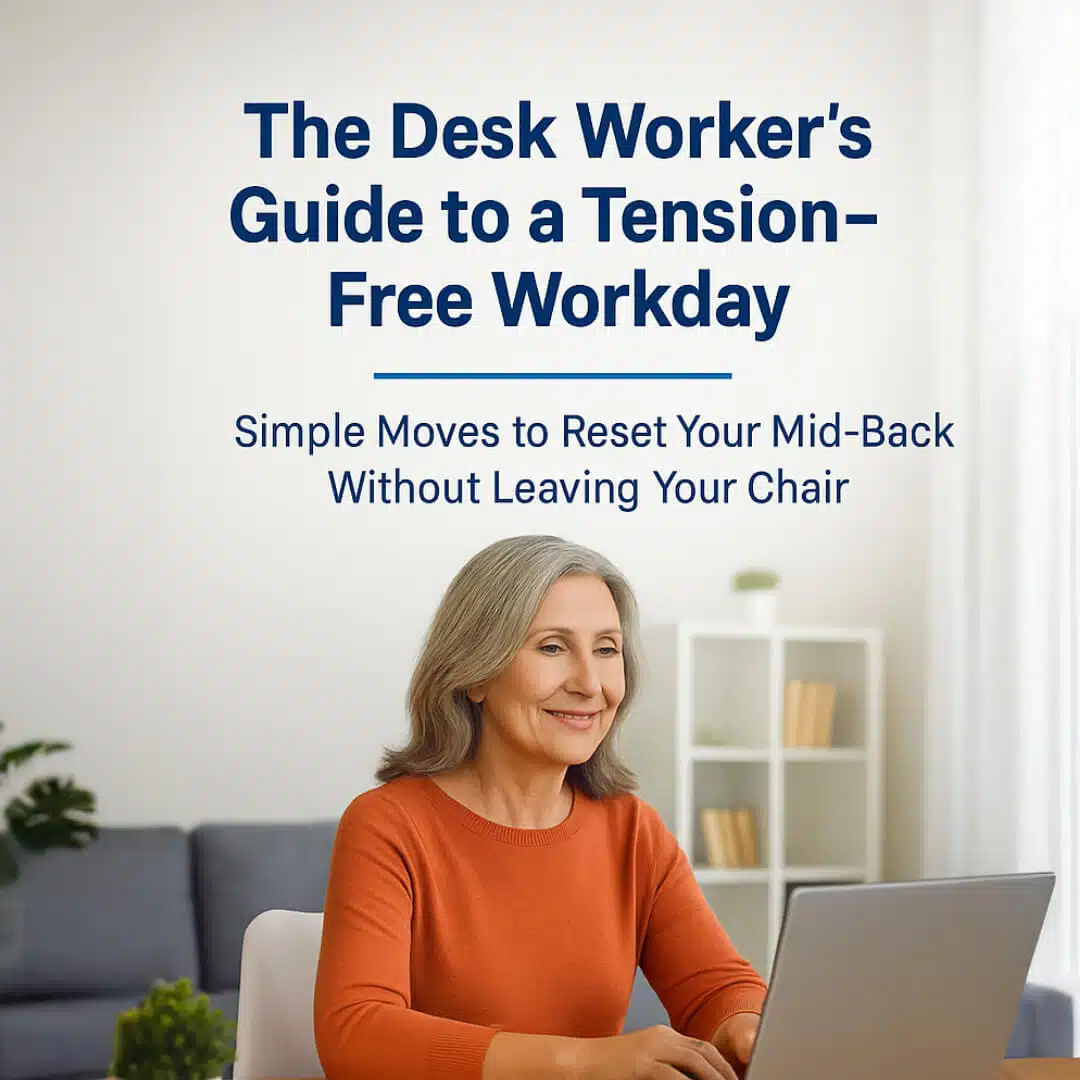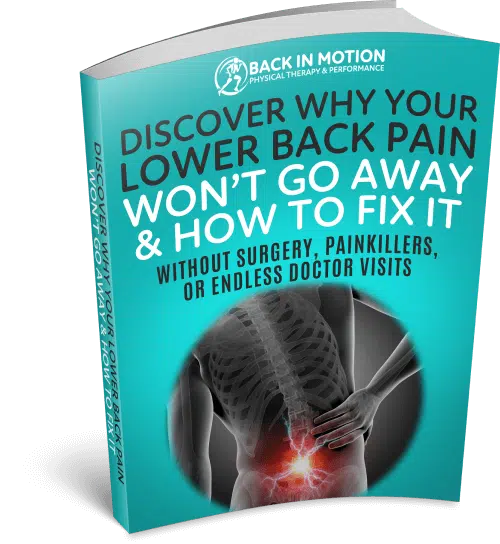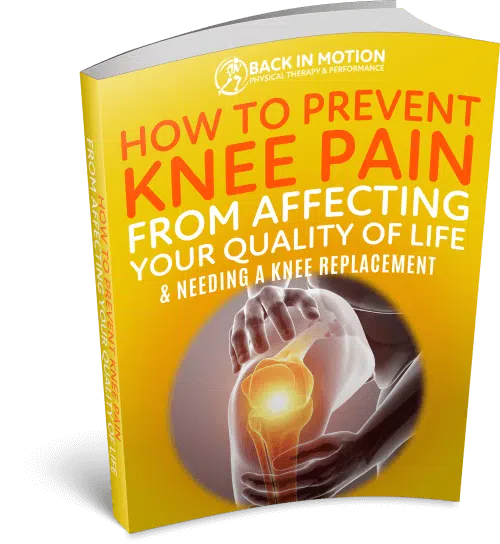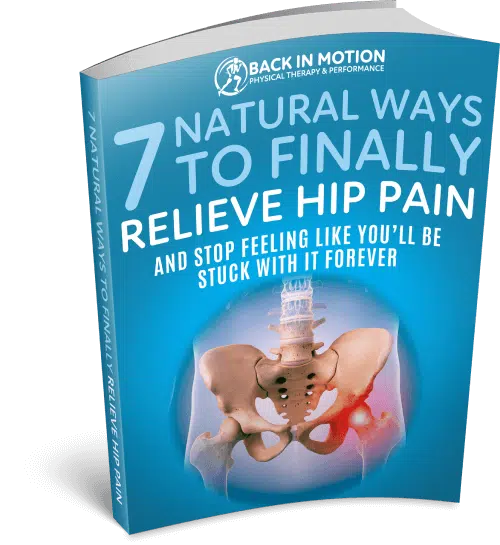The Desk Worker’s Guide to a Tension-Free Workday: Simple Moves to Reset Your Mid-Back
If you spend most of your day at a desk, hunched over a keyboard or glued to video calls, you probably know the feeling: that dull, nagging ache between your shoulder blades. It’s not quite sharp enough to call pain, but it’s always there—tight, stiff, and slowly wearing you down.
Whether you’re a busy professional, an active adult, or an athlete who trains hard after hours but sits most of the day, your thoracic spine—a.k.a. your mid-back—is taking a hit.
In this guide, we’ll break down exactly why your mid-back gets so tight, what’s really going on under the surface, and the simple, effective moves you can do throughout your day to hit reset.
Why Mid-Back Tension Happens—And Stays
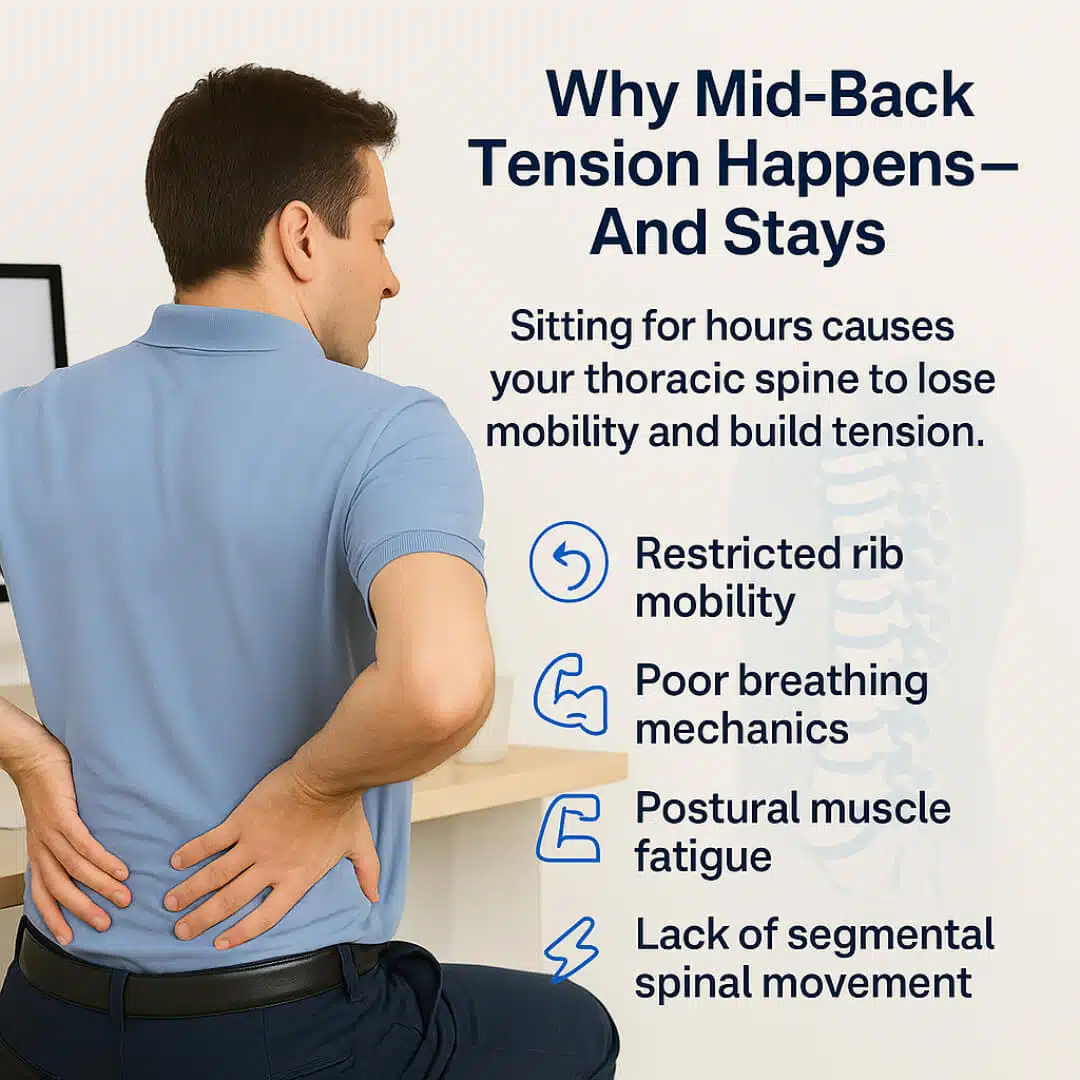
Your thoracic spine is made up of 12 vertebrae that connect to your ribs and support your upper body. This region plays a critical role in posture, rotation, and breathing.
But here’s the problem: sitting for hours in a slouched or stiff position causes the mid-back to lose mobility and build tension, especially when your shoulders are rounded forward and your head juts out.
What makes mid-back tightness different from lower back or neck pain is that it’s often caused by:
- Restricted rib mobility
- Poor breathing mechanics
- Postural muscle fatigue
- Lack of segmental spinal movement
And unfortunately, most people treat it the wrong way—stretching their shoulders or getting a quick massage, only to feel the tension return by mid-afternoon.
How Desk Work Impacts Your Spine

Think of your spine like a spring-loaded tower. It’s designed to move—bending, rotating, flexing. But sitting for hours causes the thoracic spine to lock up, particularly when you lean forward or collapse into your chair.
Here’s what’s happening beneath the surface:
- Your ribs get stuck and stop expanding properly with breath.
- Muscles responsible for good posture, like your lower traps and spinal extensors, fatigue and give up.
- Your breathing becomes shallow, reinforcing tightness.
- And eventually, you feel like you’re wearing a stiff vest under your shoulder blades.
Over time, this stiffness can lead to compensations that affect your neck, shoulders, and even your lower back.
The Mid-Back Reset: Simple Moves You Can Do at Work
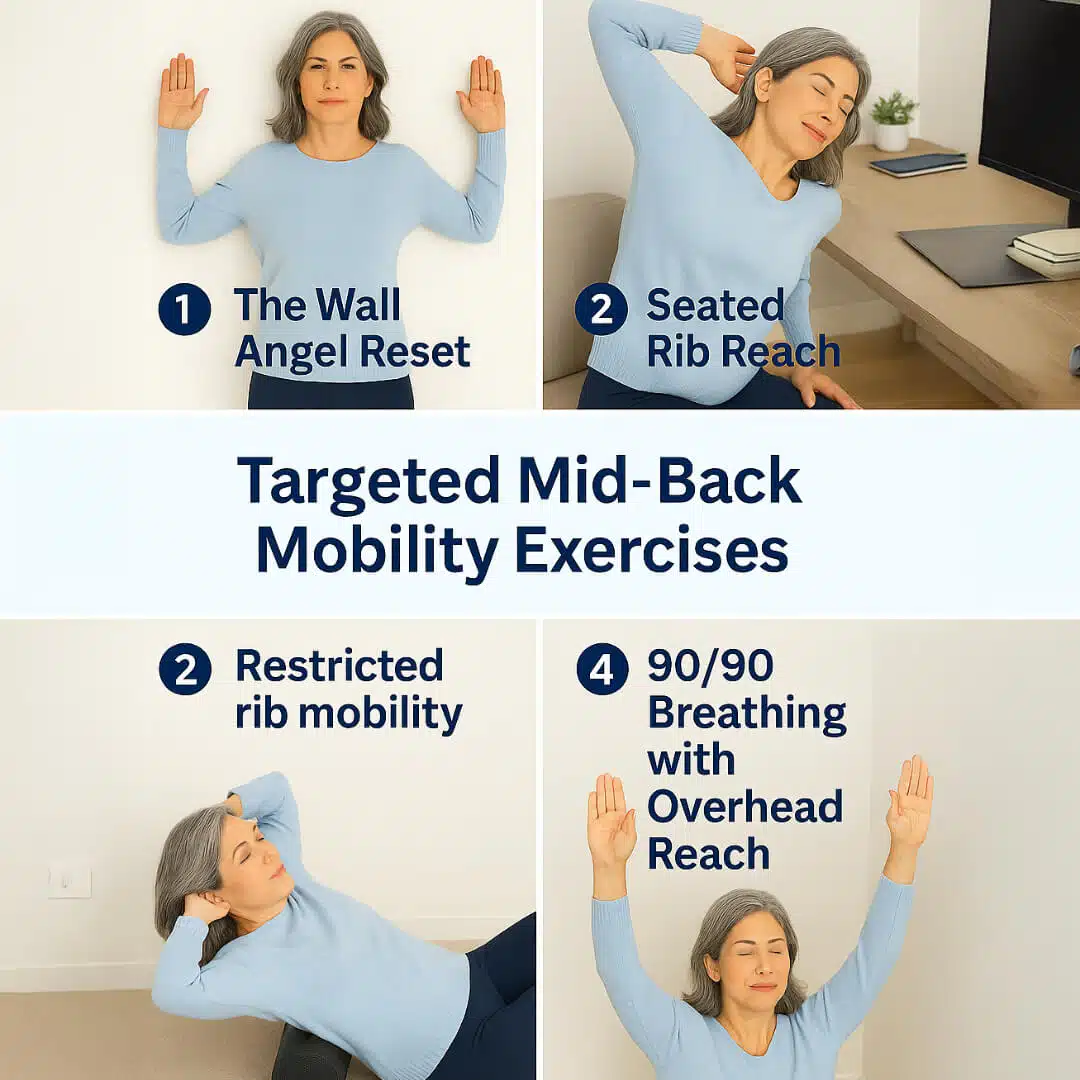
The good news? You don’t need to overhaul your desk setup or spend an hour at the gym to fix it. What you need is a few targeted mid-back mobility exercises done consistently throughout your day.
Below are four of our go-to thoracic spine resets for desk warriors:
1. The Wall Angel Reset
If you’re feeling rounded forward or like your posture is collapsing by midday, this move is a great way to wake up the muscles that are supposed to be holding you upright. It gently opens up the chest and encourages better alignment in your upper back without forcing it.
How to do it:
- Stand with your back flat against a wall, feet about 6–8 inches away.
- Tuck your pelvis slightly so your lower back makes light contact with the wall.
- Bring your arms up like a goalpost—elbows bent at 90 degrees.
- Slowly slide your arms up and down the wall, like you’re making a snow angel.
- Try to keep your wrists and elbows touching the wall throughout (it’s harder than it sounds!).
This movement helps activate your postural stabilizers—especially your lower traps—and encourages the thoracic spine to extend gently, counteracting that slouched-forward desk posture. It’s simple, subtle, and effective—perfect for a midday reset.
2. Seated Rib Reach
Feeling stiff through your mid-back, especially when you twist or turn? That’s often your ribs and thoracic spine refusing to move the way they should. This seated movement gently encourages rotation and rib mobility—without needing to leave your chair.
How to do it:
- Sit upright at your desk with feet flat on the floor.
- Place one hand behind your head and the other across your opposite ribcage.
- Inhale, then exhale as you slowly rotate your upper body gently toward the open side (the elbow that’s pointing out).
- Repeat 5 times on each side.
This move taps into thoracic rotation and helps wake up the joints that tend to lock down after long hours of sitting. It’s subtle, but consistent reps throughout the day can restore motion that makes you feel looser, taller, and more mobile.
3. Foam Roller Thoracic Extension
Your spine’s supposed to bend backward sometimes—but how often do you actually do that during your workday? This is one of the best ways to undo the forward curve your back falls into when you sit for hours.
How to do it:
- Sit on the floor and lie back over a foam roller placed horizontally under your mid-back.
- Support your head with your hands, elbows slightly tucked in.
- Keep your hips grounded and gently lean backward over the roller.
- Shift the roller up or down your upper spine by an inch, pausing for a breath or two in between, and repeat.
It might feel a little awkward at first, but this is a great way to extend (bend backward), restore thoracic extension, open up your rib cage, and breathe more freely. Even a few reps can help reverse that sitting slump and make you feel like you’ve stood up an inch taller.
4. 90/90 Breathing with Overhead Reach
Mid-back tension isn’t always about tight muscles—it’s often about how you breathe. Shallow, chest-driven breathing keeps your rib cage locked up. This drill resets your posture through breath and core control and calms your whole nervous system in the process.
How to do it:
- Lie on your back with your feet on a wall, knees bent, and hips and knees at 90 degrees.
- Keep your arms down by your sides or reach them overhead (palms facing each other).
- Inhale through your nose, expanding your ribs sideways.
- Exhale fully through your mouth, feeling your ribs drop and your abs engage.
- Repeat for 5 slow, controlled breaths.
This simple breathing reset helps your ribs move the way they’re supposed to, re-engages your deep core, and takes pressure off your spine. It’s especially powerful when you feel wired, stiff, or “stuck in your chest” after a stressful stretch at work.
What to Avoid (Even if It Feels Good)
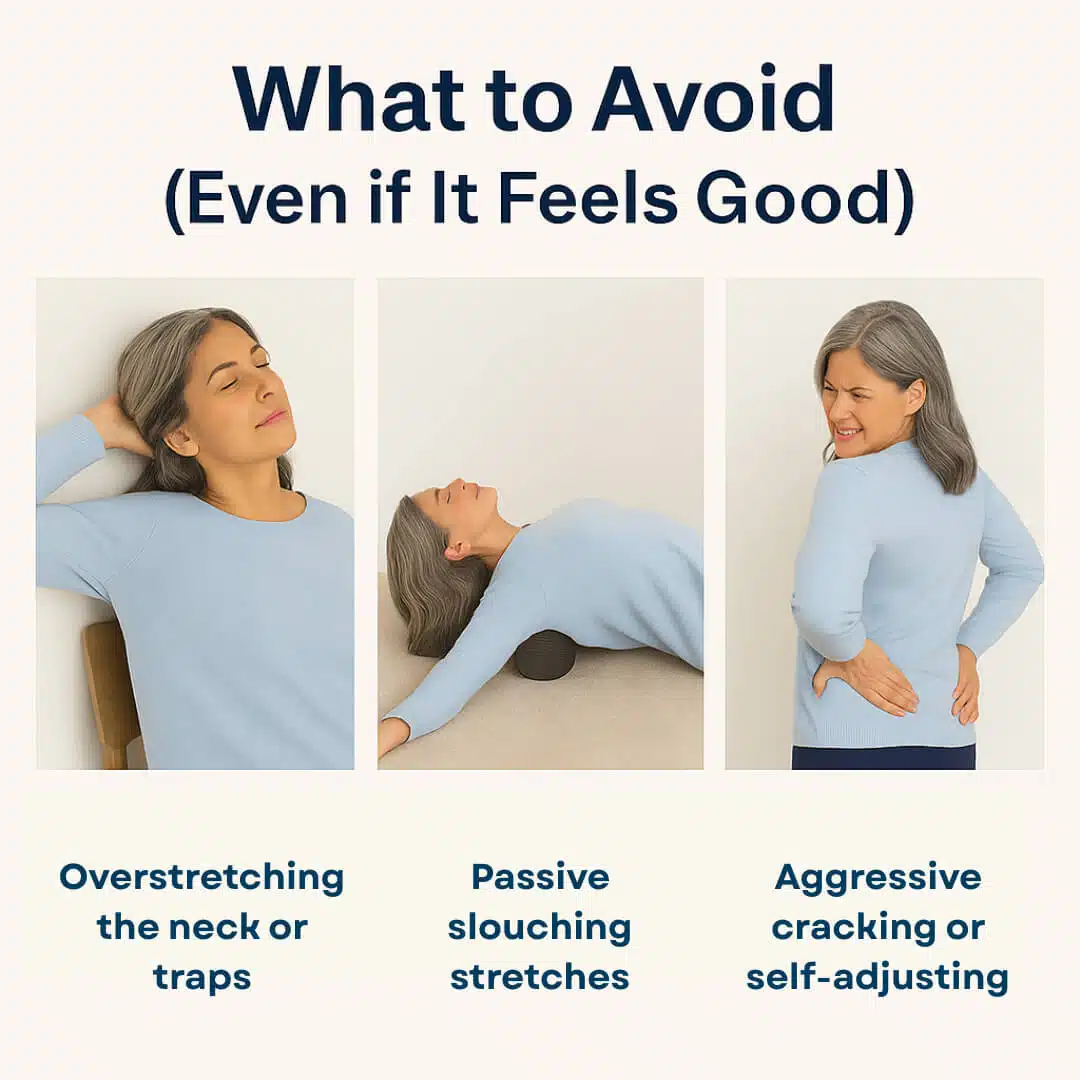
Not all movement is helpful—especially if it reinforces the wrong habits. Here are a few things we often see people try that don’t get results:
- Overstretching the neck or traps: Feels good in the moment but doesn’t touch the thoracic spine.
- Passive slouching stretches: Like lying over a stability ball without any muscle engagement.
- Aggressive cracking or self-adjusting: Temporary relief, but no long-term change in function.
True relief comes from active mobility and neuromuscular retraining, not just temporary decompression.
You Don’t Have to Live with Mid-Back Tension
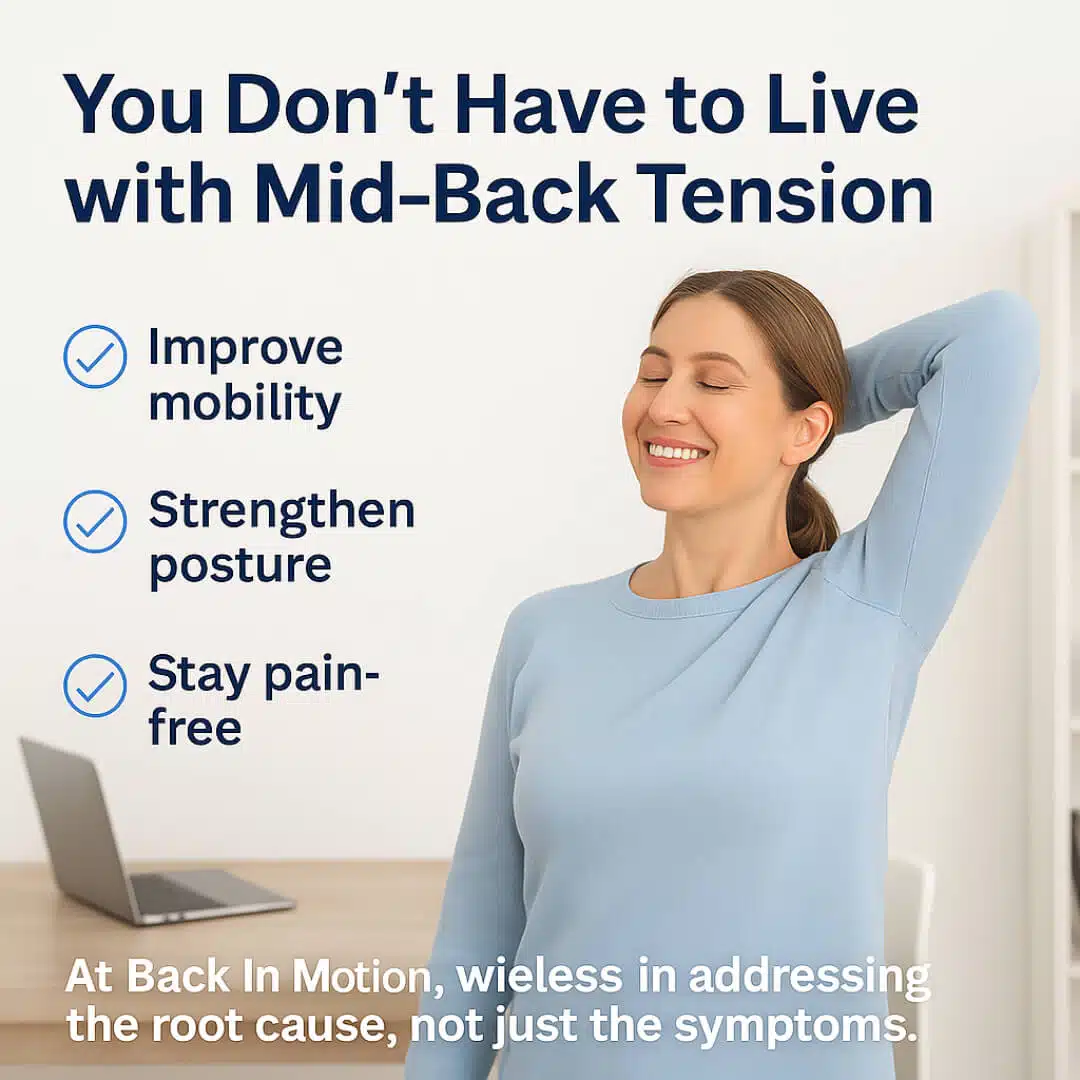
Mid-back pain or tightness might feel like an inevitable part of desk life, but it doesn’t have to be. With the right movement strategies—and a little consistency—you can keep your spine mobile, your posture strong, and your day pain-free.
At Back In Motion, we believe in addressing the root cause, not just the symptoms. Whether your tension stems from rib immobility, poor breathing, or movement dysfunctions, we help you retrain your body from the inside out.
Ready to Feel Better at Work and Beyond?

If your mid-back feels stuck, stiff, or achy—and nothing you’ve tried is working—it may be time for a deeper look. Our team of physical therapists can assess your posture, breathing, and movement to identify exactly what’s driving your pain.
You can schedule a Free Consultation or learn more about our Gray Method™ approach to solving pain at the source.
Let’s help you move better, feel better, and get back to doing what you love—without pain holding you back.

